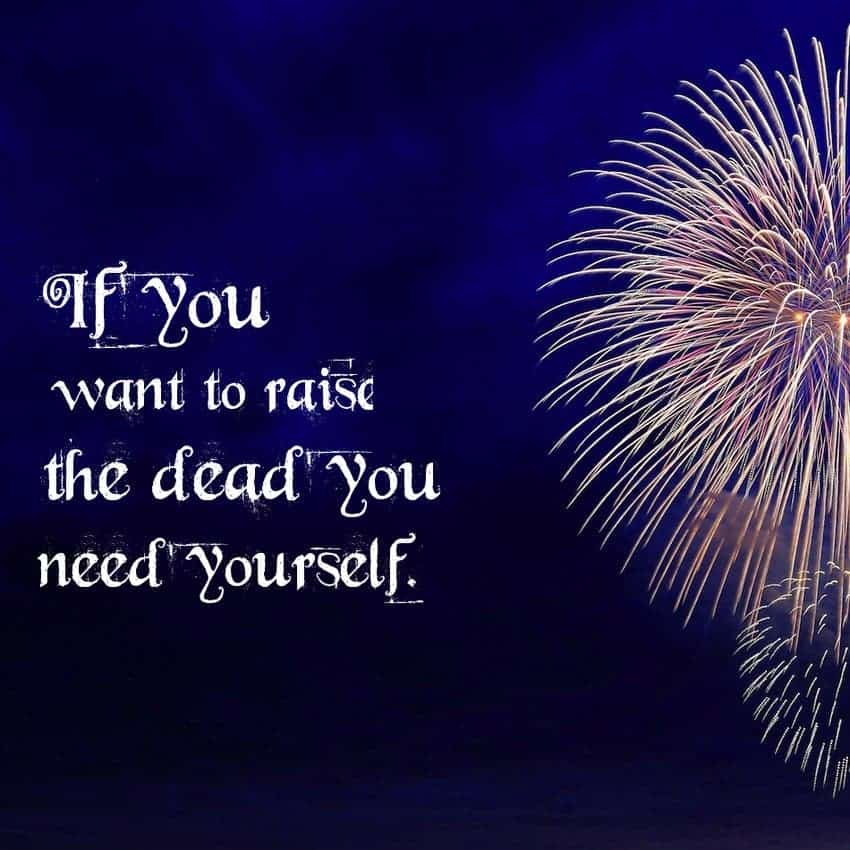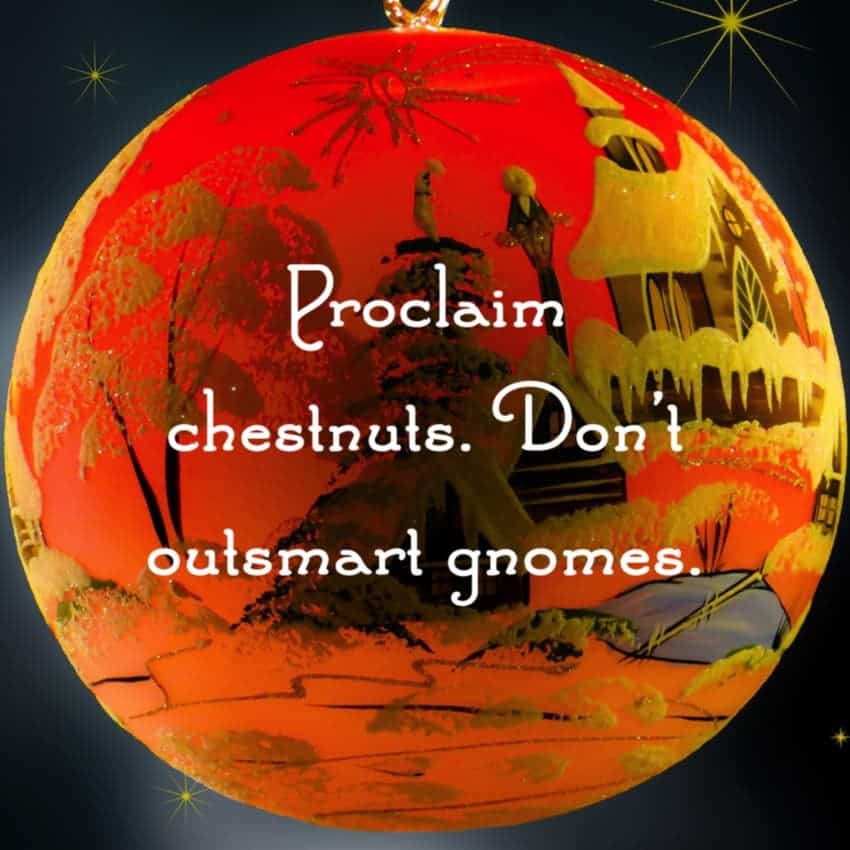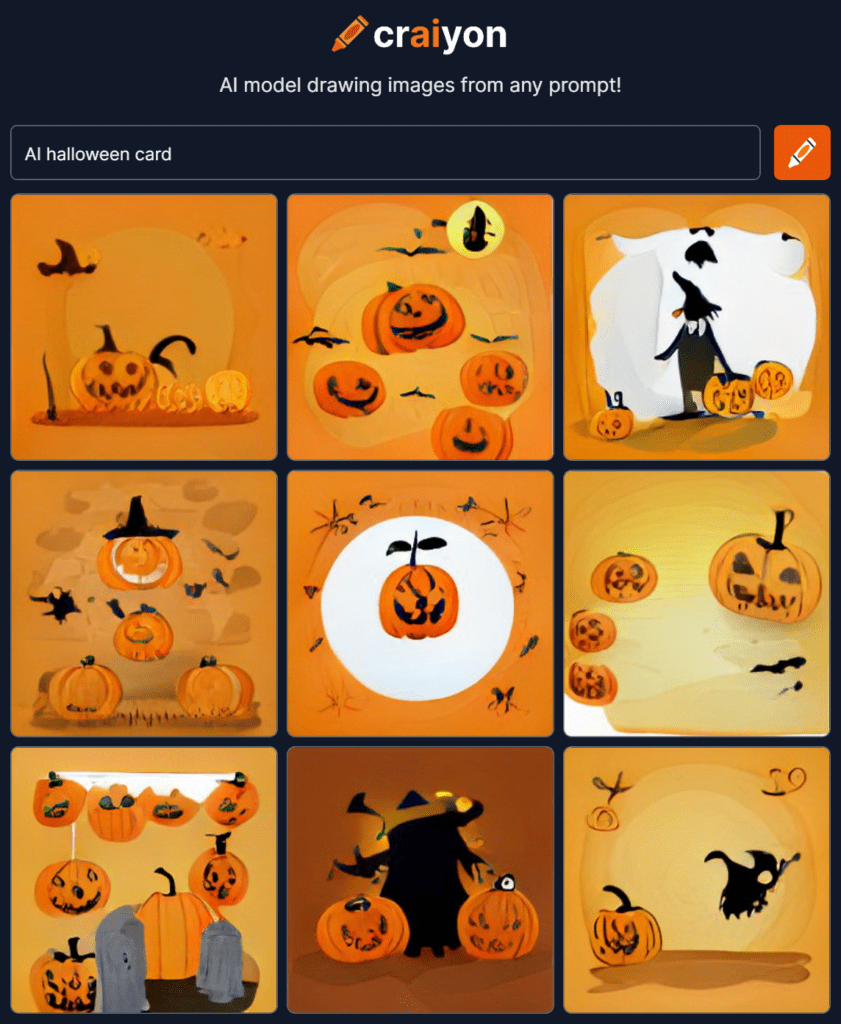All Hallow’s Eve is not that far away, and that can only mean one thing: trick-or-treating season! But for those of us that are past the age of anyone would hand us any candy, holiday cards are (pardon the pun) probably on the cards.

While the traditional approach to sending a card would be to go to a store, buy some Halloween Cards designed by another human being, write them in, and mail them out, times may be a-changing. The steady integration of AI into our society has now made it possible to have a machine generate our own, personalized cards for every holiday out there. So are we living during the first days of a new era of machine-designed holiday cards?
Perhaps not
There is no shortage of free or paid card design AIs available online right now. Some of them seem to be more reliable in their output — like thinkingmachines‘ generator — in the sense that the text on most of the cards, and the composition itself, make sense. The ones I personally enjoy, however, are those like XmasCardBot, which output either uninspiring, unfestive, nonsensical, or completely bonkers text, superimposed on a nice, festive image. Like these:



Other options do exist, and these are quite reliable. Companies such as Adobe host applications that guide you through the design process of holiday or greeting cards. Each offers extensive galleries of background images, fonts, and other elements that can be collated together to produce the final design; the text you must compose yourself, or pick from a few pre-set options.
There are also general image-generating AIs, most notably Dall-E — the AI that can create all sorts of realistic art, but it’s not publicly available — and its spinoff, the Dall-E mini, which is publicly available, but it’s not as good. The graphic isn’t perfect, but it could be passable. It’s not that good at making text on its own as it’s solely a graphic engine, but you could write your own greeting or just couple it with another, text-writing AI.

The search for a reliable card-generating AI might seem like a frivolous distraction. But the fact that we can ask this question today showcases just how far machine learning and artificial intelligence have come. It also hints at a not-too-distant future where AI may overtake unexpected parts of our life.
AI, the disruptor
More ‘serious’ potential applications of such technologies, the ones that can provide the most value or serve some purpose that most people will benefit from are bound to receive the most attention and be refined first. And we’ve already seen incredible advancements in such fields, including the curating of media platforms, pattern recognition for security purposes, and advanced robotics. Judging how AI has been integrated in much simpler, lower-stake systems, such as the generation of holiday cards, gives us a better idea of how far such technology has percolated through wider society.
So far, the systems that are available to the wider public aren’t stellar — but they do work. The missing link seems to be the availability of data and processing power — that can be sorted out in time, but it takes a lot of time and effort. The training of a quality AI relies on having monumental amounts of quality data on hand which can help the algorithms understand what they’re actually supposed to do, and how to determine whether their output is any good. This data needs to be parsed through several computational levels to be ‘understood’. The output, then, is produced through the same computational levels — in other words, beefy computers are needed to run quality AI.
And, although such systems have made incredible strides in the fields of data recognition and generation in applications such as writing creative texts or music, they are yet to fully understand what words mean — and, as such, there’s something a little off about their output.
It’s likely that not long from now, we’ll tell an AI what type of card we want to send and it will create a myriad good examples to choose from. But we’re not there yet.
When these two needs can be covered with relatively manageable costs and effort, each and every one of us will likely be able to have AIs design our very own personalized holiday cards. Until then, we’ll have to rely on human designers or go with the quirky-but-endearing ones that machines can produce as of now.


